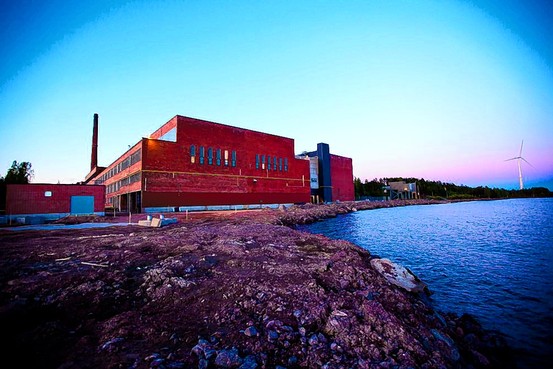7 cloud technology trends of 2024
22.01.2024
Cloud computing is on the brink of a major transformation, with businesses expected to spend over a trillion dollars on the cloud for the first time. These investments will lead to innovations that are about to revolutionize industries around the world. Let's consider the main cloud computing market trends of 2024 and how cloud trends will affect business.
FinOps for cost savings
Cloud computing is a major operational expense (OpEx). Therefore, it is important for companies to implement FinOps. It's a set of approaches, practices, and activities that help businesses gain a complete picture of their cloud computing spending in order to optimize it, increase revenue, and gain a competitive advantage.
According to the FinOps Foundation survey, in 2022, 37.1% of companies began to master the basics of FinOps, 42.8% were at the basic stage of developing practices, and 19.5% were at the stage of launching and operating FinOps. And only a small proportion of respondents were still exploring the possibility of cloud costs optimization.
While FinOps is at its most effective when companies implement it early on, there are significant benefits to using it at almost any stage of the cloud transition. Organizations that use FinOps efficiently can reduce their cloud spending by 20-30%.
HPC cloud supercomputing
Scientific research and industry innovations require more and more complex calculations each year, which exceed the classical computer capacity. These tasks are designed for supercomputers. They allow efficient processing of AI and IoT-generated data sets. Supercomputers are already speeding up research and development in such domains as genomics, drug design, climate forecasting, and geological exploration.
Traditionally, supercomputing required entire datacenters built therefore. And no one could assume that these extremely complex tasks can be done in the clouds. But cloud technologies are constantly evolving, and now supercomputing can be performed in cloud environments. This leads to an increased demand for HPC cloud services — due to their advanced technical characteristics, these solutions provide fast high-performance computing. For example, the most powerful supercomputer in the AWS cloud can perform 1 quadrillion calculations per second. This is 10 times more than the most powerful supercomputer in a conventional data center.
According to the Market Research Future, by 2030 the size of the cloud HPC market will reach $16 billion.
MultiCloud
The multi-cloud approach to IT infrastructure is, globally, very common. According to Deloitte, 85% of companies use two or more cloud platforms, and 25% use at least five. In 2022, the Pentagon signed contracts to create a joint cloud system for conducting combat operations (Joint Warfighting Cloud Capability, JWCC) worth $9 billion with AWS, Google Cloud, Microsoft Azure and Oracle. And this once again proves that the multicloud has great prospects.
According to this approach, enterprises use clouds from various operators to perform different business tasks. And at the same time, they get a number of advantages: adaptability, reduced risk of being dependent on one cloud service provider, and the ability to choose appropriate cloud services based on specific requirements.
The full-scale war in Ukraine gave a certain impulse to the use of a multi-cloud approach by Ukrainian companies. It is usually applied when building Disaster Recovery solutions, but it is only the beginning.

One of the Google's data centers in Finland
Green Technology and Zero Waste
Yes, this trend is more relevant for countries that do not have crazy nuclear-armed neighbors nearby. But it should also be mentioned.
Today, engineers from all over the world are trying to design more ecological data centers, based on renewable energy sources, due to which they have a minimal negative impact on the environment. For example, one of the Google's data centers in Finland is built in place of a former paper factory, and uses the energy of sea currents for its cooling.
Reducing the number of data centers by migrating infrastructure to the cloud helps to reduce carbon dioxide emissions and reduce electricity consumption. According to several estimations, this way the business will use 77% fewer servers and 84% less electricity, which will reduce carbon emissions by 88%.
Edge-to-Cloud
IT infrastructure becomes physically closer to the consumer. Companies create edge data centers directly on their own sites, for example, at factories, and use peripheral computing. In fact, data processing is as close as possible to its source, which improves analytics and real-time decision-making.
The Edge-to-Cloud solution provides faster data processing, increased service productivity, simplified IT infrastructure, and increased reliability and security.
This trend is especially important amidst the Internet of Things development and the emergence of 5G and 6G. Which is logical, taken the increase in the number of connected devices that will produce large volumes of data, so that the load of traditional cloud infrastructures will also increase.
Gartner predicts that by 2025, 75% of enterprise data will be created and processed at the edge, outside traditional data centers or cloud platforms.
AI chips
Artificial intelligence systems are becoming more complex and require more computing capacities. Therefore, the market for chips to replace the GPUs currently used for processing AI tasks is beginning to develop. Chips are able to perform more operations in less time with less energy consumption. This makes them well-suited for ultra-complex real-time AI tasks.
Tech giants are already creating their own AI chips for various needs. For example, Nvidia plans to invest $6.9 billion in the development of a superchip capable of replacing an entire data center of conventional GPUs. And the Cerebras company has developed a single-crystal AI chip with 850,000 cores. This is the world's largest chip by area, it is designed for deep learning.

Google's new quantum computer that has 70 qubits
Quantum computing
According to Statista, the global quantum computing market will grow to $9 billion by 2027, up from $0.5 billion in 2022. But for now, these computing is still on the rise. Yes, there already are quantum computers, but they perform a very limited list of tasks. Even though they are indeed fast.
Quantum computers are currently used in military tech. Hackers push to decipher secret information by all means, and cybersecurity specialists — to encrypt it as reliably as possible. However, if the information is not securely encrypted, a quantum computer will be able to discover the key in seconds. That's why hackers are figuring out how to use quantum computing to crack any codes, and cybersecurity startups and institutes are figuring out how to encrypt with the help of that very computing. Because everything that is encrypted by a quantum computer cannot be deciphered by the same one.
NATO is currently testing defenses against cyberattacks using quantum computing. Researchers believe that supercomputers will find the keys to common data encryption methods.
This is just a small list of cloud trends that will push scientific and technological progress forward in the near future. Some of them are already gradually coming to Ukraine, namely multicloud and Edge-to-Cloud. But this list is not limited. For example, companies must as well ensure data security and protect against hacker attacks, as they used to.
We previously gave tips on how to improve your cybersecurity in 2024.





